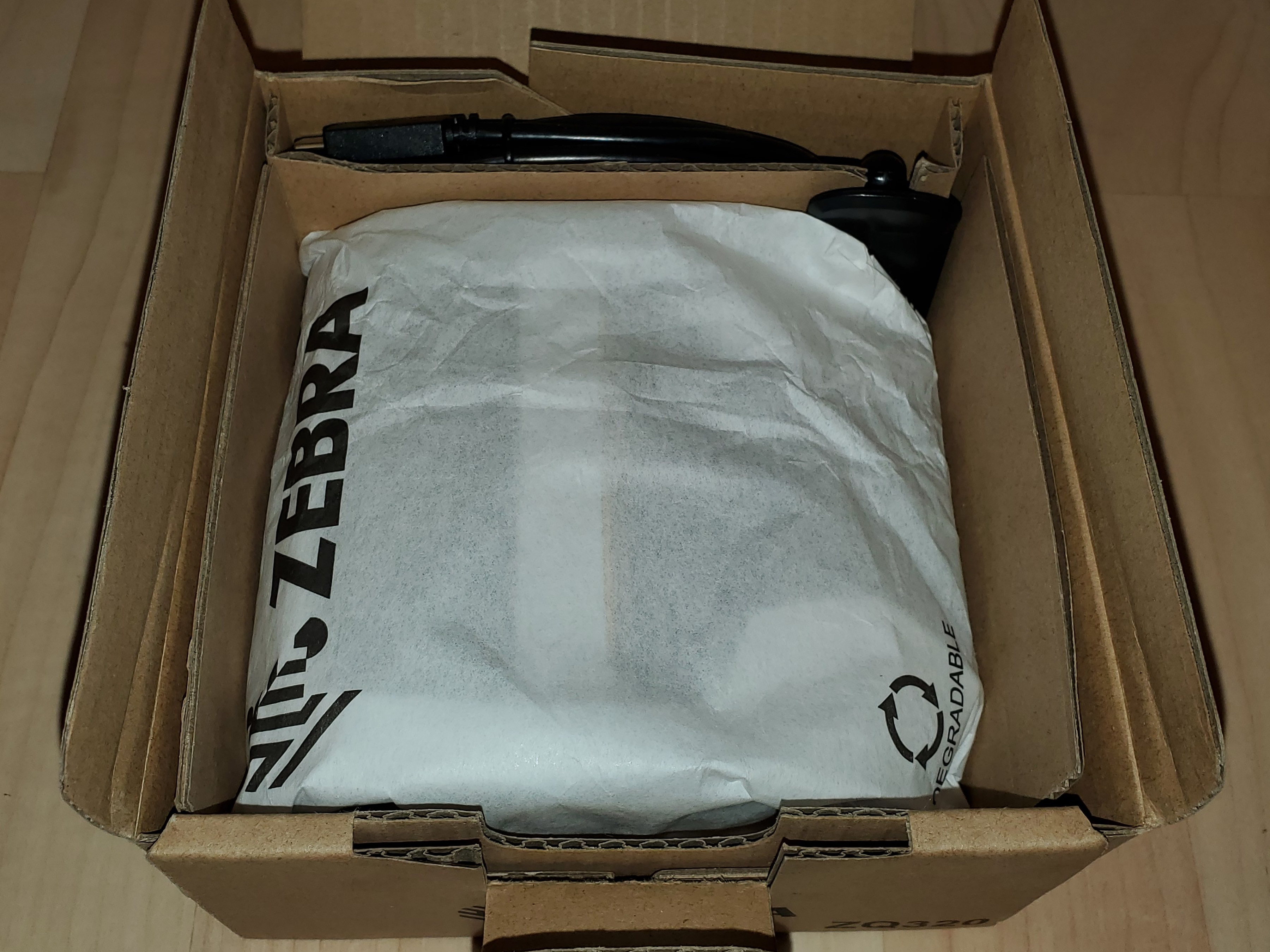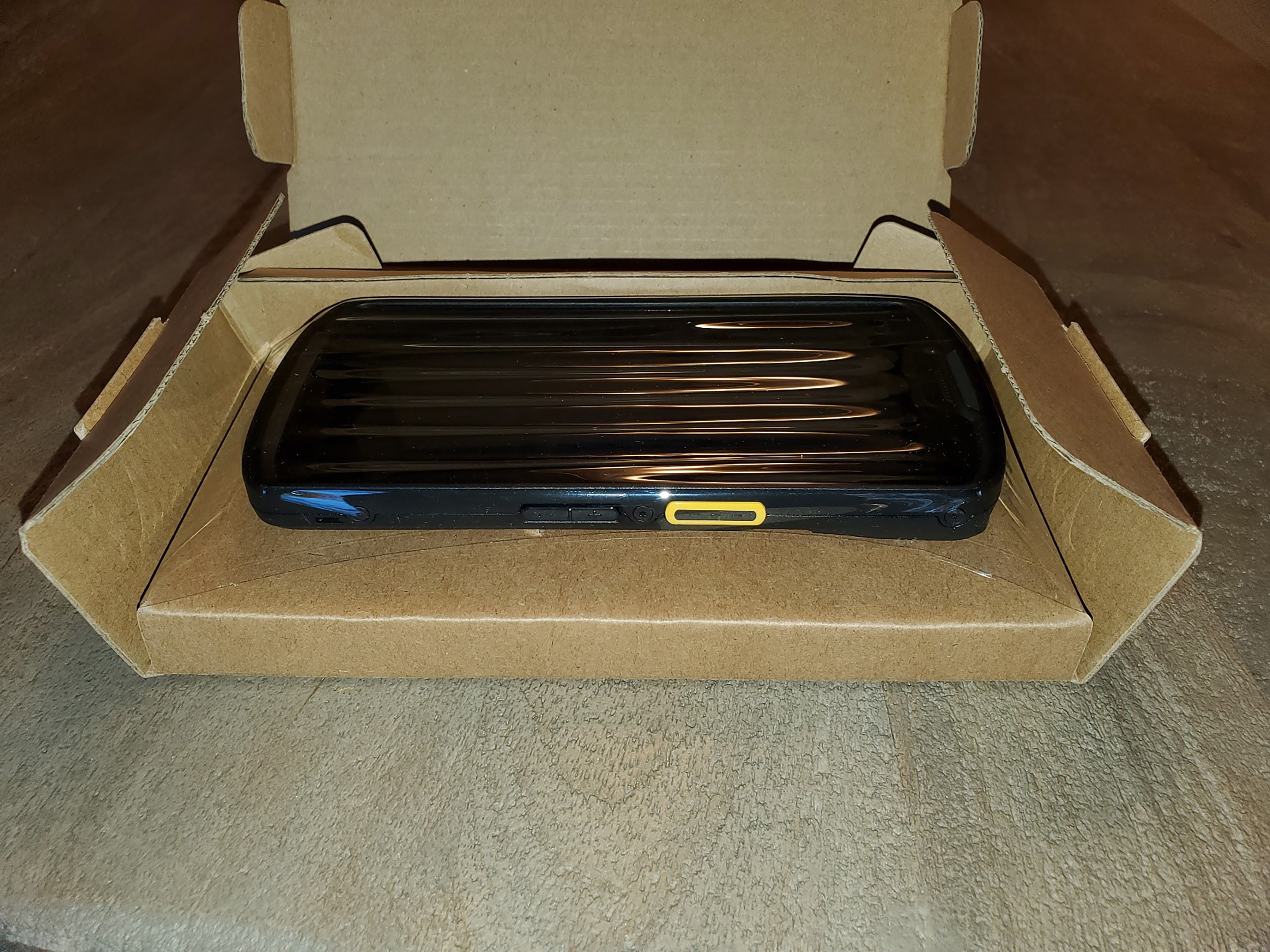Transform retail operations with Zebra’s retail technology solutions, featuring hardware and software for improving inventory management and empowering teams.
Streamline operations with Zebra’s healthcare technology solutions, featuring hardware and software to improve staff collaboration and optimise workflows.
Enhance processes with Zebra’s manufacturing technology solutions, featuring hardware and software for automation, data analysis, and factory connectivity.
Zebra’s transportation and logistics technology solutions feature hardware and software for enhancing route planning, visibility, and automating processes.
Zebra's public sector technology solutions enhance decision-making, streamline operations, and safeguard communities with advanced software and rugged hardware.
Zebra's hospitality technology solutions equip your hotel and restaurant staff to deliver superior customer and guest service through inventory tracking and more.
Zebra's market-leading solutions and products improve customer satisfaction with a lower cost per interaction by keeping service representatives connected with colleagues, customers, management and the tools they use to satisfy customers across the supply chain.
Empower your field workers with purpose-driven mobile technology solutions to help them capture and share critical data in any environment.
Zebra's range of mobile computers equip your workforce with the devices they need from handhelds and tablets to wearables and vehicle-mounted computers.
Zebra's desktop, mobile, industrial, and portable printers for barcode labels, receipts, RFID tags and cards give you smarter ways to track and manage assets.
Zebra's 1D and 2D corded and cordless barcode scanners anticipate any scanning challenge in a variety of environments, whether retail, healthcare, T&L or manufacturing.
Zebra's extensive range of RAIN RFID readers, antennas, and printers give you consistent and accurate tracking.
Choose Zebra's reliable barcode, RFID and card supplies carefully selected to ensure high performance, print quality, durability and readability.
Zebra's rugged tablets and 2-in-1 laptops are thin and lightweight, yet rugged to work wherever you do on familiar and easy-to-use Windows or Android OS.
With Zebra's family of fixed industrial scanners and machine vision technologies, you can tailor your solutions to your environment and applications.
Zebra’s line of kiosks can meet any self-service or digital signage need, from checking prices and stock on an in-aisle store kiosk to fully-featured kiosks that can be deployed on the wall, counter, desktop or floor in a retail store, hotel, airport check-in gate, physician’s office, local government office and more.
Adapt to market shifts, enhance worker productivity and secure long-term growth with AMRs. Deploy, redeploy and optimize autonomous mobile robots with ease.
Discover Zebra’s range of accessories from chargers, communication cables to cases to help you customise your mobile device for optimal efficiency.
Zebra's environmental sensors monitor temperature-sensitive products, offering data insights on environmental conditions across industry applications.
Zebra's location technologies provide real-time tracking for your organisation to better manage and optimise your critical assets and create more efficient workflows.
Enhance frontline operations with Zebra’s AI software solutions, which optimize workflows, streamline processes, and simplify tasks for improved business outcomes.
Empower your frontline with Zebra Companion AI, offering instant, tailored insights and support to streamline operations and enhance productivity.
The everything you need to rapidly and cost effectively develop high-performance AI vision applications on Zebra mobile computers.
Zebra Workcloud, enterprise software solutions boost efficiency, cut costs, improve inventory management, simplify communication and optimize resources.
Keep labour costs low, your talent happy and your organisation compliant. Create an agile operation that can navigate unexpected schedule changes and customer demand to drive sales, satisfy customers and improve your bottom line.
Drive successful enterprise collaboration with prioritized task notifications and improved communication capabilities for easier team collaboration.
Get full visibility of your inventory and automatically pinpoint leaks across all channels.
Reduce uncertainty when you anticipate market volatility. Predict, plan and stay agile to align inventory with shifting demand.
Drive down costs while driving up employee, security, and network performance with software designed to enhance Zebra's wireless infrastructure and mobile solutions.
Explore Zebra’s printer software to integrate, manage and monitor printers easily, maximising IT resources and minimising down time.
Make the most of every stage of your scanning journey from deployment to optimisation. Zebra's barcode scanner software lets you keep devices current and adapt them to your business needs for a stronger ROI across the full lifecycle.
RFID development, demonstration and production software and utilities help you build and manage your RFID deployments more efficiently.
RFID development, demonstration and production software and utilities help you build and manage your RFID deployments more efficiently.
Zebra DNA is the industry’s broadest suite of enterprise software that delivers an ideal experience for all during the entire lifetime of every Zebra device.
Advance your digital transformation and execute your strategic plans with the help of the right location and tracking technology.
Boost warehouse and manufacturing operations with Symmetry, an AMR software for fleet management of Autonomous Mobile Robots and streamlined automation workflows.
The Zebra Aurora suite of machine vision software enables users to solve their track-and-trace, vision inspection and industrial automation needs.
Zebra Aurora Focus brings a new level of simplicity to controlling enterprise-wide manufacturing and logistics automation solutions. With this powerful interface, it’s easy to set up, deploy and run Zebra’s Fixed Industrial Scanners and Machine Vision Smart Cameras, eliminating the need for different tools and reducing training and deployment time.
Aurora Imaging Library™, formerly Matrox Imaging Library, machine-vision software development kit (SDK) has a deep collection of tools for image capture, processing, analysis, annotation, display, and archiving. Code-level customisation starts here.
Aurora Design Assistant™, formerly Matrox Design Assistant, integrated development environment (IDE) is a flowchart-based platform for building machine vision applications, with templates to speed up development and bring solutions online quicker.
Designed for experienced programmers proficient in vision applications, Aurora Vision Library provides the same sophisticated functionality as our Aurora Vision Studio software but presented in programming language.
Aurora Vision Studio, an image processing software for machine & computer vision engineers, allows quick creation, integration & monitoring of powerful OEM vision applications.
Adding innovative tech is critical to your success, but it can be complex and disruptive. Professional Services help you accelerate adoption, and maximise productivity without affecting your workflows, business processes and finances.
Zebra's Managed Service delivers worry-free device management to ensure ultimate uptime for your Zebra Mobile Computers and Printers via dedicated experts.
Find ways you can contact Zebra Technologies’ Support, including Email and Chat, ask a technical question or initiate a Repair Request.
Zebra's Circular Economy Program helps you manage today’s challenges and plan for tomorrow with smart solutions that are good for your budget and the environment.

We’re Moving to More Paper-Based Supply Chain Processes as the Demand for More Technology Grows (and Our Customers are Going to Benefit in a Big Way)
We’ve found a way to package many of our products without using plastic…and without compromising their quality in transit. Check this out.
The trend away from plastic is picking up steam in front-line retail and hospitality environments, which is great to see. However, we believe more can and should be done to cut back on single-use plastics further upstream in the supply chain, especially in product packaging.
That’s why Zebra’s Packaging Engineering team has started using a new paper bag in place of the polyethylene bags that we’ve long used in our mobile device packaging. We call it the “tea bag” because it’s a new filter paper bag made of wood pulp that’s reminiscent of those used for tea.

What’s so great about this type of packaging, besides the fact that it’s biodegradable, is that it can be recycled in the paper waste stream. (Good news for customers who want to increase the environmental sustainability of their business.) This paper bag, in particular, is also certified by the Forest Stewardship Council (FSC) because wood pulp is a renewable resource. Of course, paper bags have a smaller carbon footprint compared to plastic bags, especially if they are made from recycled materials as they require less energy to produce and recycle and generate fewer greenhouse gas emissions during manufacturing. So, it’s hard to find a reason not to give them a try.
Plus, we know that paper bags are less likely to become persistent litter in the environment, too, and degrade more quickly than plastic if they do become litter. This means this small change we’re making can have a big impact on the quality of wildlife and marine ecosystems, which is important to us. (We have sustainability goals, too.)
“Cool Concept, but Will It Work?”
Now, if you’re familiar with the feel of tea bags, you’re probably wondering if the material is going to hold up against the weight and design of tech devices. Although the wood pulp design we’re using for our paper packaging is much stronger than the average tea bag, it never hurts to test a new product before going all in on it. (We don’t want to create unnecessary waste while trying to reduce waste.)
So, we’ve decided that we’re going to first use the “tea bag” paper packaging with our smaller, lighter, handheld products, such as mobile computers, printers, rugged scanners, etc. And we’re going to use it primarily to protect the device against abrasion inside their corrugated cartons. (So, if you order some Zebra ZQ3X and ZQ5X mobile printers any time soon, you’ll see the paper packaging.) We’ve tested this packaging extensively for these smaller devices and are confident they’re going to function just as well as plastic has in terms of being a protective mechanism while the product is stored and transported.
To the question of whether this switch will work in terms of making a positive environmental impact?
Let me put it this way: We’re only using this particular paper bag packaging in place of the Low Density Polyethylene (LDPE) plastic material previously used for certain smaller devices right now. Yet, we still reduced the amount of plastic we used in our product packaging by 44.4K square meters in 2023. That’s equal to 10.97 acres or 8.3 (American) football fields!!
So, I think it’s going to work! In fact, I really believe it’s something everyone in our industry should be doing, so I hope they follow our lead.
Reducing Paper Use
I also hope that once the switch is made from plastic to paper in product packaging that efforts are also made to reduce the amount of paper used. Paper may be a renewable resource, but that doesn’t mean we should treat it as if it’s an unlimited resource. It’s also still an expense that every organization should try to reduce.
That’s why my packaging engineering team has also been collaborating with the procurement, quality, program management, finance, and sustainability teams here at Zebra to strategically redesign some boxes used to ship our products. We started with the boxes used for Zebra’s highly popular TC5X and TC7X touch mobile computers because the cost of packaging was rising along with demand for these devices.
We wanted a solution sturdy enough to survive the long transit through multiple fulfillment centers yet compact enough to minimize volumetric freight costs when shipped around the globe. We set our sights on reducing material usage, lowering direct material costs, and making better use of pallet space. Improving environmental sustainability for Zebra and our customers was also top of mind.
Where did we land?
Well, we streamlined our design into one-piece packaging, eliminating the polyethylene bag and the corrugated insert. (Less plastic and paper!)

The new retention film solution is manufactured using a corrugated die-cut carton with a bonded thermoplastic polyurethane film (TPU) that stretches and “encapsulates” the product within. The packaging’s transparent film serves as a protective shipper and makes for an appealing presentation once the box is opened. We’re proud to have struck the perfect balance between minimal packaging and maximum performance. Not only is our retention film carton certified by the FSC (like the “tea bag” packaging used inside the boxes), but it’s also recyclable as corrugated waste and the TPU film is biodegradable. (There’s a third-party test report available upon request to validate this.)
Our efforts also paid off financially with $884,000 USD in savings over a one-year period, and we’re already making plans to start using it with other product lines. We don’t have to handle or store as many packaging materials (or packaged products) either, which has associated facility and labor expenses.
Here are some of the noteworthy numbers:
• 23% less corrugated material used
• 98% less plastic LDPE used
• 68% palletization improvement
• 41% less inventory space needed for TC5X
I challenge you to match – or beat – these numbers! (I’m challenging my team to beat the same.)
The reduction of both plastic and paper used for product packaging should be a continuous goal for manufacturers, distributors, and others downstream in the supply chain. It’s not enough to replace plastic with paper or other renewable/reusable materials at the point of sale in the last mile. We must reduce it at every touchpoint, starting in the first mile.
We’re making strides to do our part. Are you?
###
Related Reads:

Jeff White
Jeff White is currently the principal packaging engineer at Zebra Technologies, where he is responsible for both direct designs of new product packaging as well as oversight of outside JDM new and sustaining packaging designs. He is also a member of Zebra's Green Product Council.
Jeff has more than 30 years of experience within the electronics manufacturing industry and has contributed to efficient packaging designs for Zebra products, with many resulting in significant cost, materials usage and freight savings.
Previously, he served as senior manager for mechanical fixture development team, where he managed engineers, machinists and technicians. Jeff holds a bachelor’s in mechanical engineering from New York Institute of Technology, as well as an MBA from LIU / CW Post.
Zebra Developer Blog
Zebra Developer BlogZebra Developer Blog
Are you a Zebra Developer? Find more technical discussions on our Developer Portal blog.
Zebra Story Hub
Zebra Story HubZebra Story Hub
Looking for more expert insights? Visit the Zebra Story Hub for more interviews, news, and industry trend analysis.
Search the Blog
Search the BlogSearch the Blog
Use the below link to search all of our blog posts.
Most Recent
Legal Terms of Use Privacy Policy Supply Chain Transparency
ZEBRA and the stylized Zebra head are trademarks of Zebra Technologies Corp., registered in many jurisdictions worldwide. All other trademarks are the property of their respective owners. Note: Some content or images on zebra.com may have been generated in whole or in part by AI. ©2025 Zebra Technologies Corp. and/or its affiliates.




